Featured Articles
Battle Hymn – Part 9: Gone to Glory
 Live not for battles won.
Live not for battles won.
Live not for the-end-of-the-song.
Live in the along.
—Gwendolyn Brooks
Anyone looking for Aaron Wade in the early 1970s could find him at the Anchor Rescue Mission, a storefront church located at 1253 McAllister Street. It was in the Fillmore district, only a few blocks from the flat he rented thirty years before.
Much had changed. Between 1940 and 1970, the black population in San Francisco shot up from 4,846 to 96,078. In 1956, a federally-funded urban renewal project began in the Fillmore that saw large sections of Fillmore Street and McAllister Street declared blighted areas and razed. Thousands of black renters were evicted (they called it the “Negro Removal Project”). Among the leaving were Japanese Americans who had returned to their homes after World War II only to be forced out again. More than a decade later, whole blocks of the Fillmore remained flat and vacant. There were fewer jobs, more displaced people, more crime, and more desperation.
Little Tiger Wade had changed too. The ex-fighter was now known as the Reverend Aaron Wade and instead of knocking guys over, he was lifting them up out of the gutter.
The area was overrun with street people by then—ex-cons, runaways, dead-eyed addicts, winos lying in their own waste—and they needed a lift. Wade didn’t see their disease or sin, he saw himself in their eyes. He saw someone else too. The 25th chapter of Matthew’s Gospel was ringing in his ears: “I was hungry and you gave me something to eat, I was thirsty and you gave me something to drink, I was a stranger and you invited me in, I needed clothes and you clothed me, I was sick and you looked after me, I was in prison and you came to visit me. For,” Christ told him, “whatever you did for one of the least of these, you did for me.”
“We feed, clothe and bathe unfortunates,” Reverend Wade said. “No questions are asked. All we want is that they listen to what the Lord has to say in guiding them into a better, more peaceful life.”
Wade was a pastor at the Anchor Rescue Mission.
The mission operated out of two adjacent storefronts. One served as a chapel, complete with pulpit, piano, and about seventy fold-out chairs. A curtain separated the chapel from a spacious kitchen. The other stored donations of food and clothing and had showering facilities. The mission had no official status as a church and was unaffiliated with any denomination or agency. This allowed its ministers to serve the community without interference. Its acronym, “A.R.M” was meant to signify its purpose as the “arm” of the church.
The ministry was held together by two Baptist ladies. Sister Josephine Drayton often led the service and Sister Evoyne Crook played the grand piano. Volunteers trickled in during the afternoon to help prepare dinner. Brother Daniel Thomas, a Roman Catholic, was among them. He fondly recalled how elaborate and nutritious those dinners were and how they were, on occasion, “miraculously provided at the last minute.” There were times that the good sisters would inform the volunteers that they would have to “go to prayer” because there was not enough food for dinner. There was a small room near the kitchen and they would troop in there and kneel down with their arms resting on the cushions of sofas. “Often,” he said, “Sr. Crook or Sr. Drayton would just shout out, ‘It’s done! Praise God! He’s answered our prayer.’” At that moment, Brother Daniel said, “the phone would ring and they would find out that some company that supplied catered meals for special occasions had some left over ‘chicken cordon blue’ and could we have a use for it!”
Before dinner was the evening service, which began at 6:30 and included hymns, testimony, a sermon, and the “Altar call,” which was an invitation for anyone to come forward and accept Christ or ask for prayers. It was a strict operation. Anyone who wanted to eat had to be inside before the sermon began because the door was locked right on queue. This caused grumbling among the cranks, but what they got was worth a few Alleluias. On some nights a straggler locked outside would kick the door and curse a blue streak. The staff inside would pray aloud at that: “Just touch that one, O Lord!” “Heal him of the cursing demon!” The sisters were just as strict with the volunteer preachers. The sermon, they told them, could not be less than a half-hour in length. Brother Daniel recalled Sister Crook’s warning, “—if you stop short of 30 minutes I fill in for you.”
The Anchor Rescue Mission was a special place. After the sisters were notified that Brother Daniel was in a coma after a small airplane he was in crashed in Wisconsin, they immediately gathered everyone together in Jesus’s name and then wrote a letter letting him know that they had prayed for him. “Their letter was dated four days after the plane crash,” Brother Daniel told me, “and that was exactly the day I came out of the coma!”
Reverend Wade walked to the mission every evening for years. He led the Sunday night service, ran prayer meetings on weekday evenings, and held Bible classes four times a week. He sang those very hymns he ignored years earlier when passing beneath church windows on his way to a good time. I bet he sang them louder than anyone. When there was a problem (and “unruly or dangerous guests were always a problem” recalled one volunteer), I bet Wade kept the peace. When he was finished, he took a bus back to his apartment.
His day-to-day work with the poor over the last decade of his life will never be known—it was done as the best good deeds are always done, quietly and without fanfare. What is known is that he was the happiest man on skid row. “I’m not what I’m supposed to be as a Christian and not even what I’d like to be, but thank God,” he said, “I’m not what I used to be.”
Early in 1985, Wade complained of pain in his arm. His wife Sallie was concerned enough to call Alan and Harvey and they drove over to his apartment to take him to the hospital, but Wade shrugged it off. His spirits were up. He was on the brink of retiring from his day-job at the Gallo Wine warehouse.
On February 15, he punched out for the last time and went to his locker. His co-workers waited outside to take him to the big send-off they had planned. When the wait became too long, they went back inside to check on him.
Wade was unconscious on the floor. An ambulance was called and he was transported to Kaiser Hospital where he was pronounced dead of a heart attack.
Tributes poured in. “He was one of the best action fighters in the city’s long boxing history,” said a retired referee who knew him. “He really could punch. He was capable of putting an opponent away with one blow.” But it was his secret work with the poor that stood out, and his words echoed in the hearts of his many friends. “Helping others gives me a good feeling,” he would always say.
Funeral services were held at the Bay View Bible Church on Mandel Street before his body was shipped to his mother in Peoria, Illinois. There, in the city where the Little Tiger’s battle hymn began, another service was held, and he was laid to rest at Springdale Cemetery.
…..
Willie Mae Wade, 88, wasn’t alone as she walked to her son’s grave on that frosty morning in 1985. She held a memorial in her hand and remembered another walk, decades before, to the train station in Tennessee. She was young then, young and determined to go north to the Promised Land. She thought of things past and things passing. She thought of her children—how they crowded her mind then and now. This one, named for a grandfather born a slave, was special. He touched her soul.
She gazed at the coffin and dabbed her eyes.
The sun blinked behind the trees in shadow and light, like hope striving.
Photo: “Late Sunrise” (http://www.notefromlapland.com/2010/11/late-sunrise.html)
San Francisco’s Fillmore District by Robert F. Oaks (2005), pp. 89, 113; Chris Carllson in “The Fillmore, Black SF: Unfinished History” at FoundSF.org; Thanks to Brother Daniel Thomas, O.P. for sharing his memories of the Anchor Rescue Mission. San Francisco Examiner, 4/20/74, 2/18, 19/85; Peoria Journal Star, 2/23/85. See also David Hoyt’s reminisces in “Back in the City—San Francisco” in The Jesus Revolution.
Special thanks to Alan Roy Wade of San Francisco.
Springs Toledo can be contacted at scalinatella@hotmail.com .
-

 Featured Articles4 weeks ago
Featured Articles4 weeks agoThe Hauser Report: Cinematic and Literary Notes
-

 Book Review3 weeks ago
Book Review3 weeks agoMark Kriegel’s New Book About Mike Tyson is a Must-Read
-
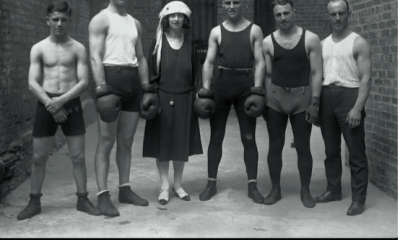
 Featured Articles2 weeks ago
Featured Articles2 weeks agoThe Hauser Report: Debunking Two Myths and Other Notes
-
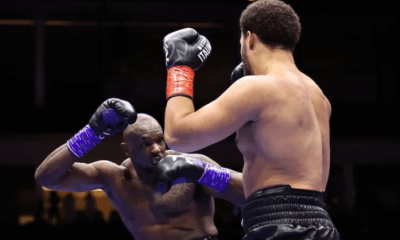
 Featured Articles3 weeks ago
Featured Articles3 weeks agoMoses Itauma Continues his Rapid Rise; Steamrolls Dillian Whyte in Riyadh
-
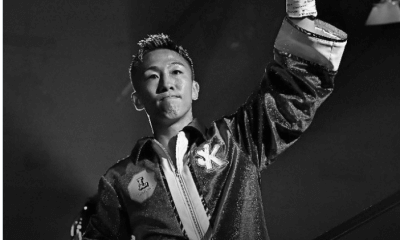
 Featured Articles4 weeks ago
Featured Articles4 weeks agoKotari and Urakawa – Two Fatalities on the Same Card in Japan: Boxing’s Darkest Day
-
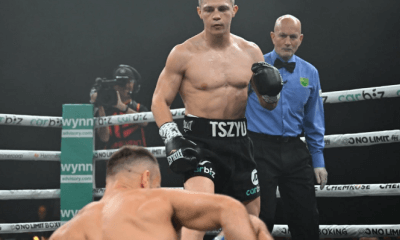
 Featured Articles2 weeks ago
Featured Articles2 weeks agoNikita Tszyu and Australia’s Short-Lived Boxing Renaissance
-

 Featured Articles3 weeks ago
Featured Articles3 weeks agoIs Moses Itauma the Next Mike Tyson?
-
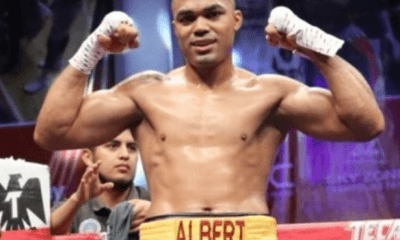
 Featured Articles4 weeks ago
Featured Articles4 weeks agoRamirez and Cuello Score KOs in Libya; Fonseca Upsets Oumiha














